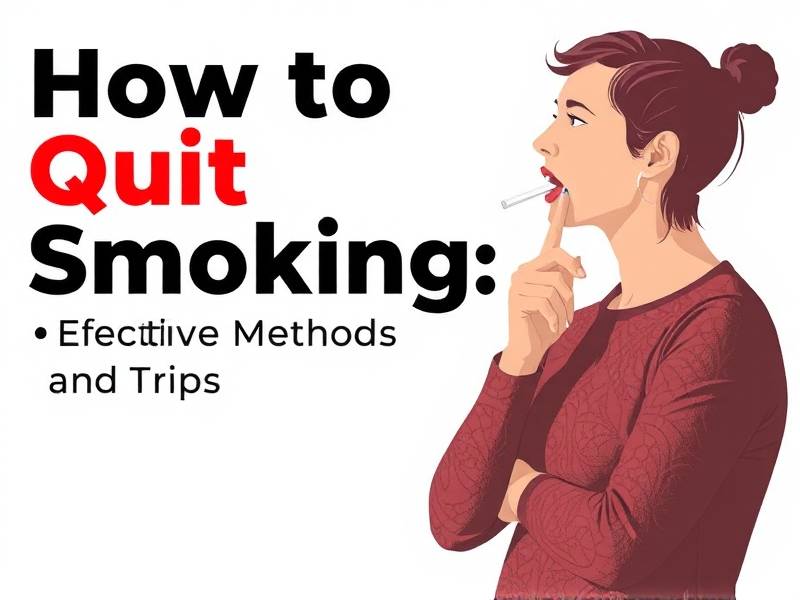How to Quit Smoking: Effective Methods and Tips
Understanding the Challenge
Quitting smoking is a significant challenge for many individuals. The habit is deeply ingrained, and the physical and psychological dependence can make it difficult to break. However, with the right strategies and support, it is possible to overcome this addiction.

Why Quit Smoking?
Before diving into the methods, it's important to understand why quitting smoking is beneficial. Smoking has been linked to numerous health issues, including heart disease, stroke, lung cancer, and respiratory problems. It also affects your appearance, finances, and overall quality of life.
1. Gradual Reduction Method
This method involves gradually reducing your smoking frequency until you no longer smoke at all. Start by identifying your triggers and plan to reduce your smoking during these times. For example, if you usually smoke after meals or when stressed, try replacing these habits with healthier alternatives like going for a walk or drinking water.

2. Cold Turkey Approach
The cold turkey method requires you to quit smoking abruptly without any tapering off period. While this approach can be challenging for some people, it can also be effective for others who have a strong motivation to quit.
3. Nicotine Replacement Therapy (NRT)
NRT is a popular method that involves using nicotine in various forms (gum, patches, lozenges) to help reduce withdrawal symptoms while you quit smoking. It's important to start with a low dose and gradually increase or decrease as needed.
4. Behavioral Therapy
Behavioral therapy focuses on identifying the triggers that lead you to smoke and developing strategies to cope with them effectively. This type of therapy can be done one-on-one with a therapist or in group settings.
5. Medications
Several medications are available that can help reduce cravings and withdrawal symptoms associated with quitting smoking. These include prescription drugs like varenicline (Chantix) and bupropion (Zyban).
Tips for Success
Here are some tips that can help increase your chances of quitting successfully:
- Set a Quit Date: Choose a date that gives you enough time to prepare but not so far in the future that you feel overwhelmed.
- Stay Motivated: Keep in mind the health benefits of quitting smoking and remind yourself why you want to do it.
- Seek Support: Share your plans with friends and family who will support you throughout your journey.
- Avoid Triggers: Identify situations or places where you're more likely to smoke and try to avoid them.
- Reward Yourself: Set small goals along the way and reward yourself when you achieve them.
- Stay Active: Regular exercise can help manage withdrawal symptoms and improve your overall mood.
Conclusion
Quitting smoking is not easy, but it's definitely worth the effort. By understanding the challenges involved, exploring different methods that work for you, seeking support from loved ones or professionals, and staying motivated throughout your journey, you'll increase your chances of success. Remember that each person's experience may vary; what works for one person may not work for another. Be patient with yourself as you navigate this significant life change.
By following these steps and tips, we hope that this article serves as an informative guide on how to quit smoking effectively. May this journey towards better health be successful for all those seeking freedom from tobacco addiction!
